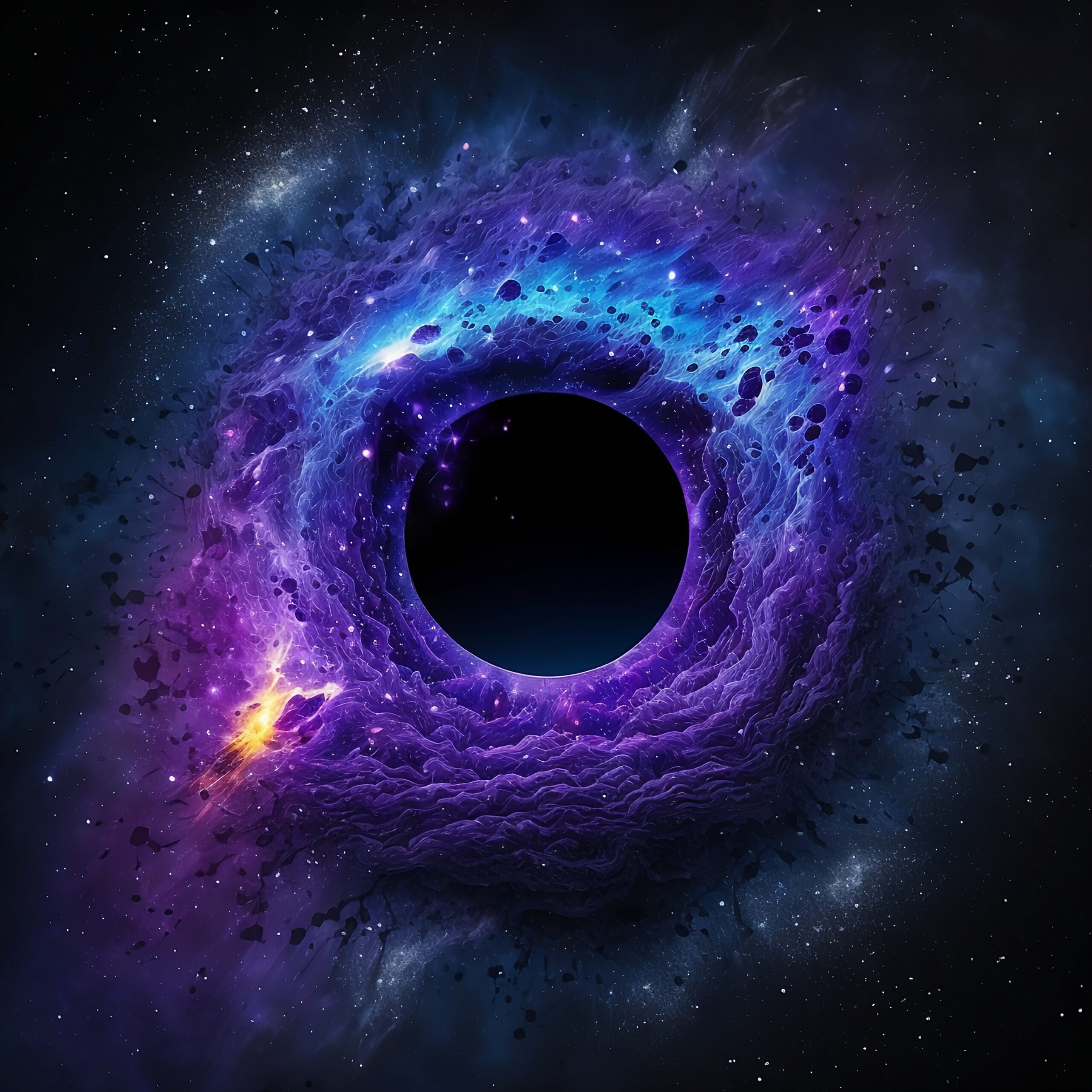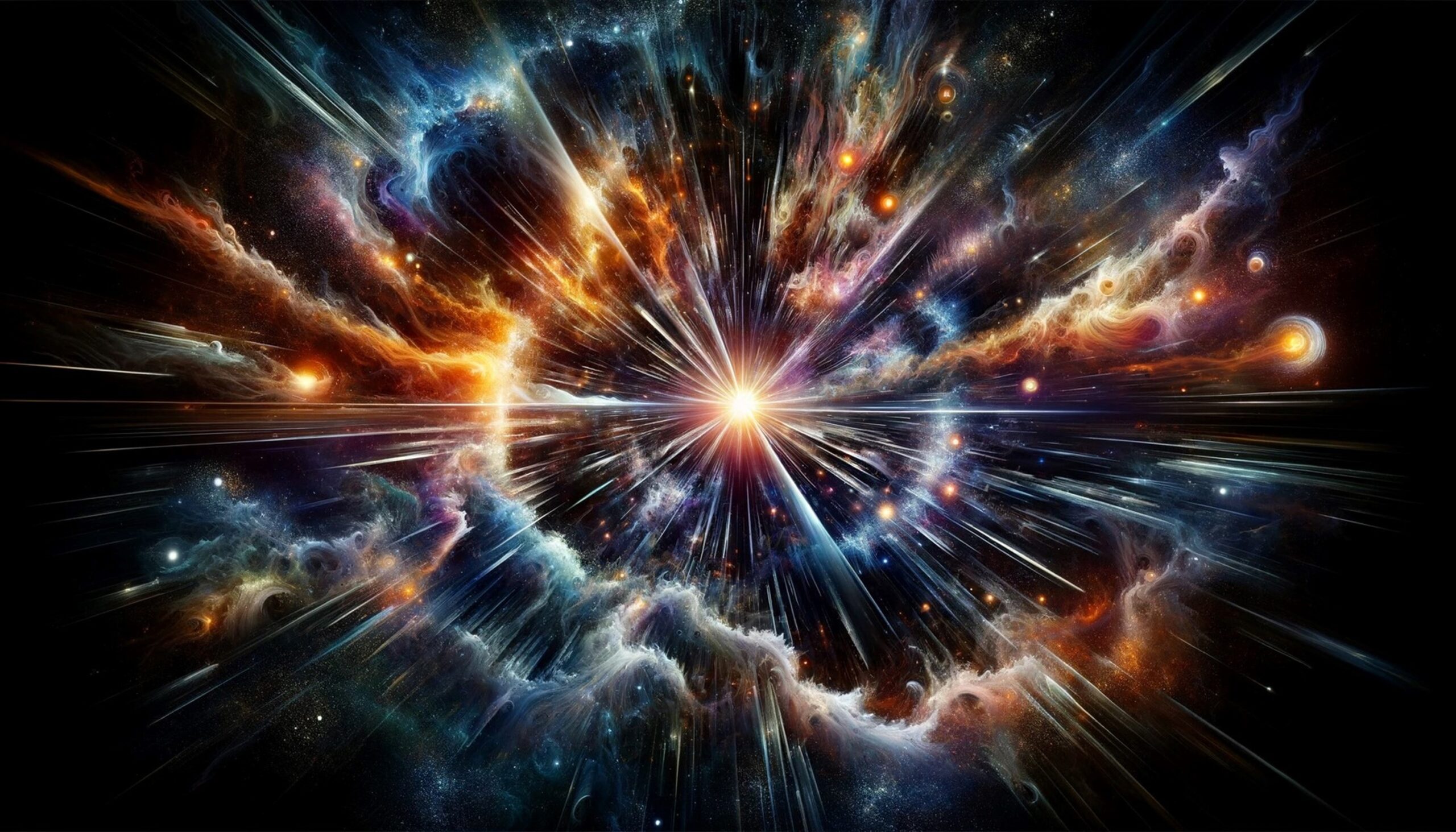Introduction
We’re familiar with supermassive black holes at the center of galaxies and stellar-mass black holes formed when stars collapse. But what about the tiniest black holes—called “mini black holes”? Could they be real, and why haven’t we found any yet?
Scientists think these tiny black holes might have formed in the wild, energetic moments after the Big Bang. If they exist, their absence from our observations raises questions about how the universe began. Why don’t we see their effects anywhere?
Studying mini black holes isn’t just for curiosity—it could help us understand some of the biggest mysteries in physics. These black holes might hold clues about how the early universe worked and could even connect to dark matter, one of science’s greatest unknowns. Are they out there, hidden in plain sight, or does their absence suggest something we’re missing in our understanding of physics?
What Are Mini Black Holes?
Mini black holes, or primordial black holes (PBHs), are theoretical objects that might have formed in the early universe. Unlike the black holes we know—stellar-mass black holes from collapsing stars or supermassive ones at galaxy centers—these would be much smaller. Their mass could range from that of an asteroid to something smaller than a mountain. Some might even be as tiny as a subatomic particle but incredibly dense, packing immense gravitational power into a tiny space.
How Did They Form?
Mini-black holes are thought to date back to the chaotic moments right after the Big Bang. At that time, the universe was extremely hot and dense. Fluctuations in density could have caused certain regions of spacetime to collapse under their gravity, forming these tiny black holes. Unlike black holes that come from stars, these PBHs would have formed through unique processes tied to the universe’s early conditions.
Their mass would depend on how they formed. Some could be as light as a gram, while others might be heavy enough to have survived until today.
Why Are Mini Black Holes Important?
Mini black holes are more than just a cosmic curiosity—they could unlock key secrets about the universe.
Learning About the Early Universe: These black holes could help scientists understand what the universe was like in its earliest stages, especially the density fluctuations and quantum processes that shaped its evolution.
Clues About Dark Matter: Mini black holes might be part of dark matter, the mysterious stuff that makes up much of the universe’s mass. If enough of these tiny black holes exist, they could help explain this elusive phenomenon.
Testing Theories of Physics: Studying mini black holes could help bridge the gap between general relativity and quantum mechanics. Their intense gravitational fields might reveal new insights into how matter and energy behave under extreme conditions.
In short, investigating mini black holes isn’t just about finding these objects—it’s about solving some of the biggest puzzles in cosmology and physics.
The Mystery of the Missing Mini Black Holes
Why Scientists Thought Mini Black Holes Should Be Common
In the early universe, conditions were extreme—rapid expansion, high density, and violent energy shifts. Scientists theorized that certain dense regions might have collapsed into mini black holes during this chaotic time. These so-called primordial black holes were expected to form in large numbers, with sizes and masses varying based on the strength of these density fluctuations.
Given the vastness and energy of the early universe, researchers believed these black holes would survive to this day. They expected to find evidence of their presence, either through their gravitational effects or through Hawking radiation, a theoretical process where black holes slowly lose mass over time.
The Big Question: Where Are They?
Despite decades of searching, scientists haven’t found direct proof of mini black holes. Advanced tools like LIGO, which detects gravitational waves, and the Fermi Gamma-ray Space Telescope, which looks for signals like those from Hawking radiation, have come up empty. Even cosmic surveys and studies of gravitational lensing—where massive objects bend light—haven’t revealed signs of these elusive black holes.
Recent studies suggest there may be far fewer mini-black holes in the universe than scientists predicted—or they might not exist at all. This challenges the idea that density fluctuations during the early universe were strong enough to create them.
Why Their Absence Matters
The lack of mini black holes isn’t just a missing piece—it raises big questions about our understanding of the cosmos:
Rethinking Early Universe Models
If mini black holes are rare or nonexistent, it could mean that density fluctuations were weaker than expected, or that some unknown process prevented their formation. Scientists may need to adjust their models of what happened right after the Big Bang.
Dark Matter Mystery
Mini-black holes were once thought to be a strong candidate for dark matter—the invisible material that makes up much of the universe’s mass. Without them, researchers must explore other possibilities, like exotic particles or new theories about gravity.
Testing Quantum Gravity
Hawking radiation, the process by which black holes emit energy hasn’t been observed. This could mean it’s weaker than expected, or that there aren’t enough mini black holes to detect it. Either way, it challenges our understanding of how quantum mechanics and gravity work together.
The absence of mini black holes is more than a missing piece—it’s a puzzle that forces scientists to rethink how black holes form, what dark matter is, and how the early universe behaved. Solving this mystery could lead to breakthroughs in understanding the fundamental workings of the cosmos.
The Science Behind the Search for Mini Black Holes
Why Are Mini Black Holes Hard to Find?
Mini black holes are incredibly tricky to detect because they are so small and subtle compared to their larger relatives.
Here’s why:
Tiny Size and Low Mass: Mini black holes are thought to be as light as an asteroid or even smaller. Their small size makes them nearly invisible unless they interact with matter or emit detectable radiation.
No Accretion Activity: Larger black holes often draw in gas and dust, creating bright disks of light. Mini black holes don’t do this, so they don’t give off any obvious signals.
Weak Hawking Radiation: While they might emit energy through a process called Hawking radiation, this signal is faint and hard to separate from other cosmic background noise.
How Do Scientists Search for Them?
Despite these challenges, scientists have come up with creative ways to look for mini black holes using advanced tools and techniques:
Gravitational Wave Detectors
Observatories like LIGO and Virgo detect ripples in spacetime caused by massive events, like black holes merging. If mini black holes interact or collide, they could theoretically produce gravitational waves detectable by these instruments.
Gamma-Ray Observations
Mini black holes might emit high-energy gamma rays through Hawking radiation. Telescopes like the Fermi Gamma-ray Space Telescope are tuned to look for these signals, which could reveal their presence.
Microlensing Surveys
When a massive object, like a mini black hole, passes in front of a star or galaxy, it bends and magnifies the light—a phenomenon called gravitational microlensing. Projects like OGLE and surveys by the Vera C. Rubin Observatory monitor for these brief magnifications, which could signal a mini black hole.
Theoretical Models
Scientists use advanced simulations to predict where mini-black holes might exist and what signals they might produce. These models help refine search strategies and focus efforts on the most promising areas.
Conclusion
The mystery of mini black holes is one of the most captivating challenges in astrophysics. These tiny, theoretical remnants of the early universe push the limits of what we know about cosmic evolution, dark matter, and the relationship between quantum mechanics and general relativity. Whether they evaporated through Hawking radiation, transformed into dark matter, or never formed in the first place, their story could reshape our understanding of the universe’s origins and the forces that govern it.
What makes their absence so intriguing is the way it challenges our assumptions about the early universe. Could solving this puzzle open the door to new physics, reveal hidden cosmic phenomena, or finally explain the elusive nature of dark matter?
The search for mini black holes continues to drive innovation in science and technology. With each discovery, we get one step closer to unlocking their secrets. This isn’t just about filling in gaps in our knowledge—it’s about exploring the unknown, where the possibilities include hidden dimensions, exotic particles, or even a revolutionary new theory of gravity.
Curiosity fuels this journey. For those fascinated by these questions, staying informed about the latest research and engaging with the wonders of cosmology can be a gateway to understanding our universe. Perhaps one day, the answers hidden in spacetime will redefine how we see ourselves and our place in the cosmos.
Share the knowledge with

